Corporate Banking Cash Management

























Corporate banking has had an interesting few years, with significant challenges around technology either being recognised or being solved. Corporate banking, in the past ten years or so, has had a wide gap between technological desire and capabilities, with 80% of treasurers asking for better customer experience while only 25% of them have digital transformation projects underway (Burnmark, 2020). Some of the challenges have remained for years - especially around product management, real-time cash management and consolidation of data; but we have seen, in our research, that this gap is narrowing faster than ever before.
Retail banking customers have always been quite vocal in their demands for better customer experience - expecting banking apps to look and service like Google or Uber. Corporate banking customers are now demanding a superior customer experience along with increased functionalities and better capabilities to play an active role in the partnership ecosystem. The corporate banking cash management landscape has adapted to these challenges by, of course, utilising digitalisation, which we have looked at in detail in this report.

We have seen some interesting changes driving trends in the corporate banking space. According to the World Bank, domestic credit to the private sector by banks (as a percentage of GDP) has risen from 82.3% in 2010 to 98.9% in 2020. The hugely underserved SME banking space has grown exponentially in the last few years, generating 90% of all economic activity in Europe, forming a key segment for corporate banks to target. New revenue opportunities are also opening up from partners of corporate banks - fintech startups, technology companies and digital players from other industries - enabling new revenue streams and better monetisation of existing capabilities for large corporate banks.
As digital transformation and automation in corporate banking are creating new efficiencies, corporate treasurers are also facing shifting priorities and needs. Corporate treasurers are increasingly looking to realtime data and cash visibility as a key area
of focus, along with the existing demands of liquidity management and costs of funding. Technology has been very good at making this possible as well, with the ability to provide real-time insights for decision making being brought in through partnerships and in-house projects.
This report looks at use cases of corporate banking, especially cash management, to identify where the opportunities and challenges lie in the ecosystem. We have also identified the changes we expect to see in the coming years, especially with feedback from experts in the corporate banking industry, including Barclays and BNY Mellon.
All these trends are causing banks to re-look at their technology stack to offer a strong suite of products and services, while almost mimicking the customer experience already in place at retail banks. The report also looks at some of the technology stacks available in banks globally, to understand what trends may be driving corporate banking technologies in the future.
The journey has just started; we have accelerated so fast during the pandemic. The market moved online and corporates cannot avoid considering their presence on digital channels.
Technological change in corporate banking is here to stay, meaning corporate bankers must constantly assess how best to utilise technology – and how the competition might be using it, too.
FinTech’s drive the development of the new normal business models that has evolved on the financial ecosystem after 2020. Collaboration with FinTechs are quintessential for survival as corporates are increasingly seeking a seamless digital experience which most banks are still unable to provide. FinTechs are a powerhouse of innovation of various products for the bank to shop from. This is undoubtedly the most important feature for the bank to partner with a fintech.
Unfortunately, bank fintech collaboration has yet not picked up in numbers as was anticipated. Research of top banks (10 nos.) in Europe (including UK) have revealed very less number of bank fintech partnerships being formed in the corporate banking space. Though the numbers since 2020 definitely show an uptick as a natural response to the pandemic. Out of these 33 deals, 9 deals pertain to BNP Paribas which appears active in the fintech partnership space for corporate banking.





Cash and liquidity management products form one of the key segments within corporate banking and are offered to enable cash flow forecasting, comprehensive reporting, settlement on time, disbursal of funds and efficient management of liquidity. Digital cash management will aid in the centralisation and effectiveness of all aspects of capital management.
Despite the pandemic, cash management still provides the largest profit margins for corporate banks.
Seamless, customercentric experience on banking channels
Consolidated view of cash from client's accounts worldwide
Rationalisation of multiple bank accounts
Higher yield by automatically sweeping excess funds into money market instruments
For corporates
For banks
Cost efficiency through automation
Ability to run comprehensive stress scenarios
Reduced fees due to more efficient operations
Creation of crossselling opportunities
Mechanisms to improve end-customer stickiness and wallet share
Cash Management Financing
46%
of CFOs consider liquidity and cash management their top challenge
of CFOs have changed how often they re-forecast liquidity
• Legacy software and systems and the associated costs of replacing them

The US bank introduced Cash Pro, a forecasting app, in collaboration with a fintech that uses artificial intelligence and machine learning to more accurately predict future cash positions across clients' accounts. The usage on its existing app Cash Flow Monitor usage has increased 34% year on year since its launch in March, 2021.

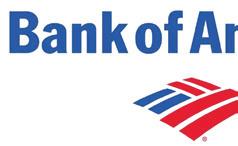
Deustsche Bank introduced a target balancing cash pooling service that helped its client Weiland, a Germany-based copper and alloy specialist to access funds from US operations. This enabled a significant amount of liquidity to be concentrated at the group level rather than being split across multiple bank accounts across US locations. These funds were channelised to reduce debt and also cost of capital. October, 2021.


• Support for customers’ cash management challenges
• Fraud and security concerns
• Manual processing of credit and cash management decisions leading to delays and inefficiencies
• Lack of in-house skills to cope with digital systems
• From a ‘nice to have' valueadded tool, to a 'vital' tool




• Access to data that can be analysed for insights
Citibank introduced a multi-bank target balance solution that automates cash concentration of balances held with third-party banks into a single header account at Citi, providing visibility and control across banking relationships. The client was Digicel, a Caribbean-based mobile phone network and home entertainment provider operating in 33 markets. February, 2019.




• Becoming a strong business partner with a one-stop provision of services
• Centralised view of cash flow
• Reduced costs and errors with less human intervention
Corporate financing includes a host of products that provide sources of funding to businesses to meet daily business needs with support for working capital and third party obligations. Digitalising corporate lending and financing will enable all functions of the credit workflow to move out of silos, be integrated and become more transparent.
Introduced a new trade working capital solution that reduces time and enables corporates to access working capital faster. The platform enables customers to submit data directly and complete the process digitally within minutes which earlier needed 48 hours. December, 2021.
The Alabama (US)-based banking entity launched a digital solution aimed at homebuilders and developers for construction lending. This was done in collaboration with a construction finance company and a payment technology provider that gave builders and developers new construction loan management options through a cloudbased platform. July, 2021.

• Outdated legacy IT systems which are difficult to replace

The US-based financial services company has launched virtual cards for instant B2B payments that uses machine learning and straight through processing for instant payment of supplier invoices. January, 2022.
• Cost and complexity of acquiring relevant systems and connecting them
• Data silos within product and decisioning groups
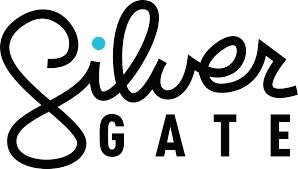
• Difficulty to partner with external technology firms
• Competition from bigtechs and fintechs offering bank-like products to corporates

A blockchain bank and a financial infrastructure provider of cryptocurrency solutions for institutional and commercial customers announced the issuance of a $205 million loan collateralised by Bitcoin. March, 2022.
The UK-based bank partnered with a payments fintech that provides end-toend digital single invoice finance and whole-book invoice factoring solutions on a single platform. The partnership is expected to expedite access to short-term finance for its business customers. March, 2022.


The Switzerland-based digital assets bank has partnered with an independent asset manager to tokenise its portfolio of loans worth EUR 5 million to Italian SMEs. March, 2021.
The British bank has partnered with a specialist asset finance provider to offer equipment and vehicle financing via an online platform to one million customers. September, 2020.

The Netherlands-based multinational bank was among the first institutions to launch sustainability-linked financial products for its corporate clients. It extended 139 such loans in 2020 and 54 loans during January to April, 2021.
• Faster and efficient onboarding with no need to provide redundant data
• A cloud-domiciled platform to significantly reduce time-tomarket for banks to release its products


• Integrated front-to-end lending cycle meeting credit pressures
• Comprehensive and holistic view of its finances and cash flow cycles
The UK-based bank tapped into digital business onboarding, automated due diligence, real-time financial crime decisions and risk rating technology services from a UK-based RegTech firm that will enable the bank to speedily disburse bounce-back loans to corporates coping with the impact of the pandemic. September, 2020.
• A superior customer experience
Business bank accounts and cards are essential for accounts receivables and expense management while also giving financial identity and legitimacy to the corporate.
This category of corporate accounts refers to products that help corporate employees and business partners / customers seamlessly navigate through day-to-day business activities. These products help with instant payments, escrow services and virtual accounts creation in order to manage employee/customer transactions.















Reconciliation
Multiple and high fees structure for multiple business accounts.
Spend management and reconciliation are an identified pain point for businessesagreed by 60% of corporates surveyed.
(Source : Businesswire, June-2022.






Repe doluptae. Ut pa que dionsenim exereptas renda cum, sum escidit experum im quundis simusae rferupitios Uciatatu reprae volorio. Cest, odit ped ut aces es et ut ellest
High minimum balances to be maintained in multiple business accounts.
Difficulty in opening business accounts in overseas markets due to AML/CFT norms.
Maverick spending and possibility of misuse.
Delayed payments due to challenge of reconciliation may impact credit rating and limits.



The implementation of virtual account management solution at HP in 2019 has enabled the US-based information technology company to decrease the number of bank accounts it manages by 40%. The virtual branch solution enabled to digitize the documentation process for tax and cross border payments. 2019.
The South Africa-based bank has launched a first-of-its-kind digitised escrow service in the country. May, 2021.
The two UK-based banks introduced a new virtual account platform for corporates which will allow them to segregate the clients' cash supply appropriately and experience enhanced cash management using one centralised platform. 2019.


The Indian private sector bank in collaboration with an Indian fintech has launched the country’s first white-label digital escrow solution which includes eKYC and eAgreement with a significantly lower turnaround time. July, 2021.


The French banking group BNP Paribas, in collaboration with an open banking payments platform, launched an online payments service to combine PSD2 APIs and instant Single Euro Payments Area (SEPA) features. The open banking platform provides pan-European connectivity to banks to benefit from open banking capabilities. March, 2021.





Santander Bank Polska has launched an e-banking platform for large companies and corporations including features like enhanced notifications, customisable dashboards, group workflow management and automation. May, 2021.

The UK-based bank has teamed up with Oracle to launch virtual account management projects for corporates with account reconciliation and rationalisation features. February, 2022.
The American multinational payments card service provider has formed an open banking partnership with a Swedish open banking platform provider to improve the onboarding process for prospective card members to help seamlessly connect their bank accounts and verify income, identity and account information. May, 2021. The South Korea-based bank has initiated open banking services for individual businesses while enabling B2B2C services to manage accounts of all other financial companies in one place. May, 2021.

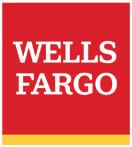
The US-based bank launched virtual cards to digitally pay invoices of business payments with the security and control of a credit card. November, 2020.
The Japan-based bank has partnered with a Japanese personal finance management fintech to launch a cloudbased B2B billing agency that acts as an agent for credit and billing for intercompany payments and also as a guarantee for credit sales. November, 2021.



The US-based financial services company, in collaboration with a UK-based business payment platform provider, has launched virtual cards to cater to B2B firms to enable automated payment processing and expense reconciliation. It features on-demand virtual card issuance to employees’ mobile devices via an app. November, 2020.




The Japan-based bank provides a deposit and withdrawal details management platform for customers of corporations and individual business owners. This enables the central management of the balances and deposit/withdrawal details of multiple business accounts, including from other banks, making it possible to easily deposit and withdraw money, check balances, and visualise overall finances. May, 2022.
The California (US)-based bank has launched virtual cards in the UK to cater to payments and working capital needs of its corporate clients. Payments can be made in USD, Euro or GBP. February, 2020.
• Lack of technological capabilities to support virtual account creation
• Competition from fintechs offering similar services
• Verification and AML
• Connection between virtual and physical accounts, and associated pricing differentiation
• Limited to online transactions
• Increased safety and privacy
• Ease of control and tracking
• Better and faster cash flow and working capital management
• Integration with ESG goals of corporate client
• Cost-effective for centralising their accounts payables and receivables.
Payments includes a bundle of products used by banks to enable its clients to remit and transact funds. Sectors such as retail, ride hailing and hospitality are some of the sectors that have experienced a major shift to digital and real-time payments, accelerated by the impact of the pandemic.
Transaction volume of wholesale payments done by global corporates in 2020
Source: OliverWymanThe transaction banking arm of the USbased commercial bank in collaboration with a London-based payments firm has introduced a solution that delivers foreign exchange in 124 currencies across 163 countries. April, 2022.

Santander UK piloted an international payments tracker for UK-based companies. This provides an interface accessible on the platform or via an invitation email, that leverages the SWIFT GPI tracking service as well as other payment data sources, including the platform’s own data. September, 2020.

• Struggling to transition from legacy infrastructure
• Declined payments and associated costs with reputation damage, in a low margin space
• High-cost payments tools like cash and cheque
Introduced JPM Coin in early 2021, a digital token representing a fiat currency using blockchain technoloy that will facilitate the transfer of payments between institutional clients, enabling 24/7 business-tobusiness money movement. It was used commercially for the first time in October 2021.
HSBC Malaysia launched a global wallet, the country’s first multi-currency digital wallet for small and medium enterprises, to make and receive international payments from one single global account. January, 2022.

• Concerns around cyber security and data theft
of global GDP. The size of global GDP in 2020 was $85 trillion
The UK-based bank invested in a payments technology firm to develop a cloud native Payments as a Service (PaaS) platform. July, 2020.

The Oman-based bank launched payments via QR code that will allow merchant partners to accept e-payments from customers irrespective of their bank or wallet. May, 2022.

• Partnering with third-party solution providers
• Significant jump in incremental revenue

• Significantly reduced cash handling costs


The US-based bank in collaboration with Tassat, a global provider of blockchain technologies for digital payments, launched instant payments to cater to B2B clients to facilitate OTC desks, liquidity management and other business operations. October, 2021.

The India-based private sector bank partnered with a fintech with capabilities in digital payments to introduce the digital services for merchants and deployment of smart POS devices across 1600 cities. October, 2021.
• Payments data that can be analysed to enable better product design and cross selling
What are some of the challenges you are addressing in this space at the moment?
We are seeing demand for real-time access to banking through the use of APIs, giving our clients alternative options for connectivity. This leads to improved payment processing and more timely access to information (and better informed decision making). Ultimately, we want to give our clients connectivity options that suit their needs and business processes. This is all about making it easier for our clients to interact with us by enabling direct integration between their workflow tools (TMS, ERP, CRM, etc.) and the bank for core cash management functionalities.
What does the partnership ecosystem look like to your team? Do you work closely with external technology providers or fintechs to obtain capabilities around innovation?
There needs to be a balance on how we deliver solutions to our clients. The Build, Buy or Partner decision is a critical one in any delivery. However, the Partnership approach has a strong ethos at Barclays and we are very active in this space. This allows us to deliver innovative solutions that may not necessarily be core to us.

We have several active partnership initiatives at the moment - some are still conceptual, some are in play and some are live. It’s also worth mentioning that we have a strong relationship with the fintech sector, and support many of them by providing them access to accounts and banking services. We also have our Rise programme, which supports early stage fintech start-ups with mentoring and office space.
Are there any interesting use cases you can share around partnerships that have helped address some of these challenges?
We have partnered with a company called Transfermate to develop a solution that allows our clients to collect funds from their clients based in overseas locations. The solution is now live and we have initially looked at Universities in the UK that need to collect fees from overseas students. The service is promoted by the Universities to their students, giving the students a cost effective and easy way to pay their fees locally and at the same time help the universities to track and reconcile their receipts.
Barclays has recently announced a new project around virtual account management. Why is this important to your clients?

Virtual Accounts provides clients with greater visibility and control of their account structures, giving them the ability open/close accounts themselves in real-time. VA allows clients to segregate clients’ funds, allocate cash and reconcile payments more effectively. Ultimately it provides a way to centralise cash and liquidity management to support Treasury concepts like In House Banks or Shared Service Centres. Sub-entities under a parent entity can be created within a virtual structure, each with their own addressable virtual accounts and all linked to a single physical account per currency. POBO/ROBO is made possible through the central Treasury entity making and receiving all payments on behalf of the sub-entities.
This achieves significant cost savings and operational efficiencies, lowering of bank account fees, self-service and automation for opening and managing bank accounts and a far more efficient reconciliation process that lifts out a lot of manual exception processing.

Payments is another area seeing major transformation. What do you think will happen to payments technologies in the medium term?
Certainly, it is an exciting time to be in payments, change and innovation is happening all around. What we are seeing is a stronger emergence of instant and real-time payment schemes around the world, albeit domestically. It will be interesting to see if these domestic platforms can be linked together creating interoperability. Open Banking is making big strides in payments, the use of PIS (Payment Initiation Services) is steadily growing, especially in the UK, and we can see more opportunities developing in this space. We are also seeing the convergence of functionalities of traditional payments and cards.
Also, the use of DLT/Blockchain and Digital Assets has the potential to increase the visibility and speed of payments, and mitigate risks (e.g. in wholesale PvP (Payment v Payment) and DvP (Delivery v Payment) scenarios. There is also potential for cross border payments, in real-time, with atomic settlement between parties.
Alternative data is a major topic of interest in the retail banking space - do you see any applications of alternative data in the corporate banking cash management space as well?
As you have mentioned, Alternative Data can be used in the onboarding process of Corporate clients. This can help with KYC processes, for
example, understanding company and legal entity structures, identification of beneficial owners etc. We also see the benefit of combining financial and non-financial data together, providing much richer information so clients can make better informed decisions.
As Open Banking moves more into the realms of Open Finance, and then, ultimately, Open Economy, data will prove to be central/integral to all new use cases that develop in this field. Collecting information, with the data owner’s express permission, applying machine learning/AI analytics tools to it and playing the findings back to customers and clients in insightful ways will open the door to a wealth of new opportunities.
How big of a challenge is ISO 20022 with so many different types of data formats having to be dealt with?
ISO20022 will, ultimately, simplify the entire landscape as all variations of legacy schema and formats will converge on a single, globally agreed standard. However, getting there will create significant challenges for all players – take, for example, something as seemingly simple as the need to express a remitter or beneficiary address in a payment instruction. Many systems today will hold address details as a simple block of text, or at best, split it into basic lines: Address line 1 , Address line 2, etc. but specific requirements may exceed that where the structure demands very specific data points to be isolated in specific tags. The migration
burden should not be underestimated.
What do you think will be the key trends to watch out for (in the wider corporate banking or cash management) space?
As Corporates strive for greater efficiency they will look at automating the simple and repetitive tasks. The use of APIs will continue to grow in value, giving clients real-time connectivity and direct integration into their TMS/ERP/CRM, etc.. And when this is coupled with instant/real-time payments and data, you create the perfect storm for opportunity. The use of data, both by banks and Corporates, is also changing. Gone are the days when banks will just issue a vanilla bank statement. Corporates will expect greater insights from the data they hold, both internally and externally.



The current corporate banking product view is centred around individual segments as we have seen - the core banking and technology systems deal with products like payments, cash management, lending, working capital, liquidity management, etc. individually and separately. This approach is increasingly becoming inefficient due to the introduction of new digital offerings like virtual accounts and virtual expense management that combine multiple products to enable the service.
While corporate banking innovation is taking hold with a customer-centric view, the lines between individual products and segments are blurring; with multi-segment connectivity and integrated use cases clearly the way forward for corporate banking.
We have analysed four multi-segment use cases where we see heavy investments being made by corporate banks. Each of these use cases could potentially be products of the future; but today, they work as a connected combination of separate products within the banking ecosystem.
These use cases are just a small representation of multi-segment use cases. What stands out, however, is that cash management is still at the centre of all emerging use cases.
Banks are unlocking new revenue opportunities through embedded finance by adopting a platform-based approach
Shuffle data and information between the solution provider and platform
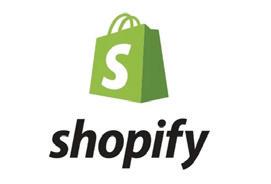
Allows its drivers and delivery partners to access the bank's services like account origination, digital verification, payments and cards
Banks and FIs whose products are extended by the players to the platform
Bank-fintech partnership for data analytics for better product development

Monetise client access to the bank’s APIs
Players embed plug and play financial solutions onto the platform

Website or network where the solution is embedded and provides access
Embedded finance successfully creates a platform-based ecosystem where banking, lending and payments come together with non-financial service providers to provide new offers for customers
Offers merchants a one-stop-shop to manage funds, pay bills and track expenses
One of the most popular use cases in embedded finance involves utilising data analytics on the platform to design innovative financial products
Open banking and digitalisation have significantly helped streamline working capital decisioning and offer management
Introduced a digital interface that is plugged to the back office of the bank
Guarantees and credit line are consolidated at the group level
Subsidiaries do not have to undergo separate credit risk review or KYC norms
The single, consolidated view offered by virtual accounts can be created with the help of a virtual overlay, or using an integrated platform
Multiple physical accounts in various countries and banks
High cost of maintenance in relation to multiple physical accounts, especially in payments between accounts
Challenges being solved by virtual accounts
High cost of security and authentication and inability to manage workflows
Regulatory and KYCdriven delays in opening new accounts
Lack of connectivity between the corporates' Treasury Management Systems and banks' systems
The cost of running multiple accounts is seen as the key driver for opening virtual accounts, but ease of payments and straight-throughpayments and access to working capital are seen as the most valuable
Accounts receivables transactions are initialised
A VBAN is provided by the corporate to its clients to initiate payment Multiple virtual account nos. are generated to match different entities
Reconciliation of accounts is done by crediting to the appropriate entity/department/ subsidiary accounts
Intra-day liquidity management and liquidity-as-a-service is expected to be the next big trend after instant payments
Automated fund checking system
End of The Day
Real time intraday liquidity sweeps
Corporate High bank overdrafts
Nostro Liquidity and Exotic Currencies
Intraday liquidity management platform
Balance netting to reduce overdraft burden
High Interest Cost For The Corporate
High Provisioning Cost For The Bank Under Basel Iii Norms
TITLE IF NEEDED
Shift to real time instant payment from batch system






When we started work on this report, sustainability services was not something we had planned to cover. However, as we researched corporate banking offerings by global banks, sustainability services came up as one of the most popular ‘new’ services being offered by banks to their corporate clients.
Sustainability is a standard which most corporates around the world are investing heavily in - both to improve the conditions of our environment as well as to attract responsible investments. With human activities contributing majorly to the climate emergency that is bound to affect not only the climate, but also the economy, it’s rightfully been a key area of focus for banks. Sustainability by corporate banks is aimed primarily at providing financing to corporates to become more environment friendly.

We set out to research the different sustainability products offered by corporate banks, the target audience and the minimum loan amounts. We picked out 30 corporate banks in 12 countries spread across 4 continents, randomly, enumerating and comparing their sustainability products for corporate banking and their target audiences.
We found 12 major product groups offered by the banks in sustainability services, ranging from green bonds to green mortgages. Most corporate banks in the UK offer all 12 product groups, with banks in Asia and Africa lagging behind.
We also looked at the target groups for these product offerings and we identified 9 major audiences for the sustainability products, that we have also illustrated. Most banks targeted large corporations, unsurprisingly, with a few of them offering products for niche areas like smart cities and electric cars.









Green Bonds Banks' offerings where the proceeds are used to finance green projects




Green Investments Structured investments integrating ESG themes
Regular/ Syndicated green loans






Green loans extended on the condition that they will be used for environmentally friendly activities
Green Deposits Balances deposited in a green asset tool and used to finance environmentally friendly projects
Project financing Financing of corporate green projects by banks










Trade Finance
Financing that helps ensure distribution of goods globally in an environmentally friendly way


Asset Finance





Financing for projects with a goal of zero emission assets
Supply Chain Finance Financial opportunities to improve the economics of green supply chains

Discounted Loans








Risk/ Regulatory
A discount on loans to companies that achieve pre-defined standards in sustainability






Assessment of the environmental risks associated with banks' lending and investment activities



Green Buildings Financing the development and construction of eco-friendly buildings
Green Mortgage Banks' offer of mortgages on green buildings






Technological support for these products and segments largely comes from core technology systems - from core banking and CRM to payments processing and billing systems. Slowly, but surely, we see this tech stack shifting towards an ecosystem model with the fundamental desire to create more external partnerships.
The tech stack transformation is overwhelmingly 'outside in', with external capabilities and revenue opportunities formulating these changes, rather than the 'inside out' approach we have observed for the past several decades in banking transformation.
The transition from a basic product-centric model with rigid functionalities that worked in silos, to a customer-centric model with realtime, omnichannel and analytical views has made it necessary to shift to platforms rather than solutions.
Core systems in corporate banks are also now being built with flexibility in mind. API capabilities are built in. Data conversion and mediation tools are not separate any longer. The customer-centric approach to technology ensures consistency and better measurements of customer satisfaction.
Availability of SDKs ensures collaboration with the developer ecosystem.
The benefits of an 'outside in' approach are immense and corporate banking is now beginning to explore technology systems that align with this view.
For this section, Burnmark has looked at several corporate banks and their transformation plans underway to understand what their tech stacks look like, at the moment.
Bankers should start to focus on projects that reach into ecosystems to create scale and value outside of their organisation, which can be done via the very simple use of APIs and value exchanging partnerships.
Neal Cross Entrepreneur and ex-Chief Innovation Officer

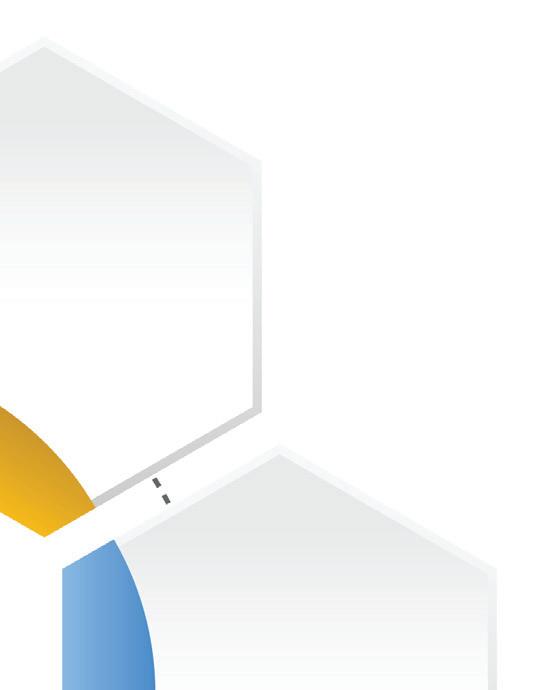
The connection between the bank and its correspondent bank could be based on multiple languages which could act as bottlenecks preventing Straight Through Processing. Sometimes short data fields are used for names and addresses which when truncated makes it harder to corroborate identities or understand full beneficiary details. The bank needs to employ multiple platforms, converters or tools for the migration of each of them to a standardised format.
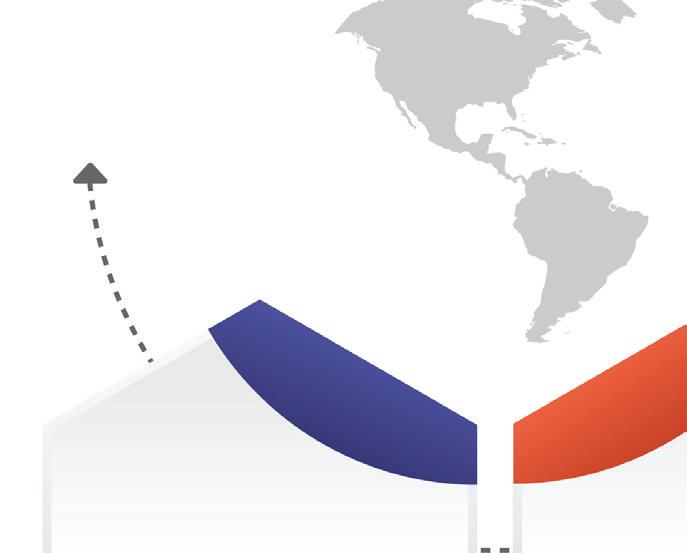
The solution is clearly a standardised global industry exchange data format over different payment networks – preferably using a rich language like XML, as in ISO20022. This data can also support innovation in payments, while also making it easy for a platformbased approach to efficiently handle data conversion.
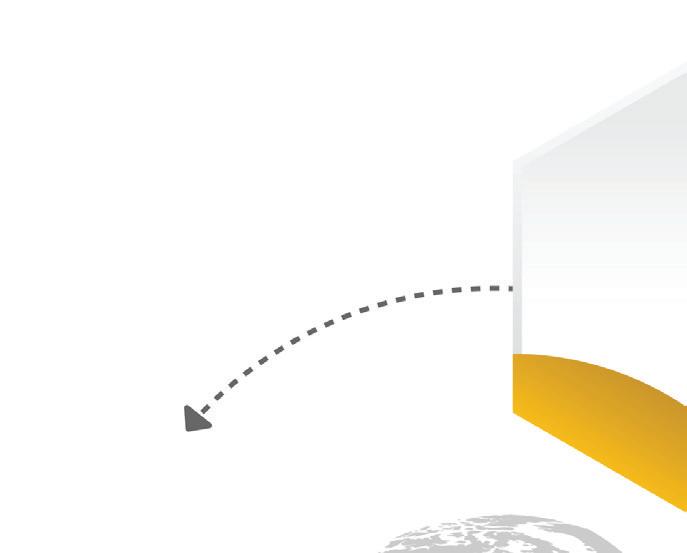
Head
JASON - JavaScript Object NotationData interchange format

“Unstructured data is a barrier to increased efficiency and results in repairs, an inquiry back to the sender, manual reviews and ultimately a delay in the payment execution.”
Michael Knorr
of Payments and Liquidity Management, Wells Fargo

I would love to have your views on the transformation you're seeing with your clients in the institutional banking space.
I think there is an enormous amount of work that's happening to all our institutional clients, and the focus is very much on making sure that there is a client centricity to everything they do. Is that perfect? Clearly not. It’s a journey, but we can see a number of institutions moving away from pure banking services to create a monitoring institution. And they’re very vocal about creating electronic monetary institutions to serve their clients better in a different manner, not necessarily through the banking channels.
Some others also partner with fintechs to support pieces of the value chain, and make sure that they have the capabilities their clients need. I think there is a lot of work that's going on at all our clients to change the perception of the end clients and supporting them in cash management across legal entities, of their own clients in multiple markets or of themselves if they are based in a number of countries with different legal infrastructures.
How does BNY Mellon support these transformation programmes they are taking up?
We're trying to be very close to our own clients and serving their needs to do two things.
The most important aspect is to maximise what they're able to keep as part of the value chain within the banking system. One of the issues that I think our clients report – and I’m not surprised – is that they're seeing more and more of the value creation being taken away. This is definitely true with retail, but also with corporates. That's one of the risks of parts of the value chain being taken away and being moved to fintechs, and what stays with the banks is usually just the settlement piece that needs to be within the bank for capital consumption purposes, and liquidity. What they’re trying to do is capture as much as possible of the whole channel. Now, of course, with corporates it's a little bit easier because there is a lending component that our clients have. So that is an important trigger, an important piece of that puzzle. But still there is that element that's happening, that it's just an important component.
There are also pieces in terms of capabilities supporting payments that go everywhere in the world. We at BNY Mellon have a very large custody franchise, which is not specifically needed for this business, but it gives us the liquidity and it gives
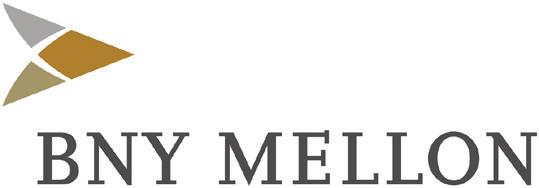
us the capability to support payments in every single market you can possibly think of, and that is something our clients need. It’s less and less valuable for them to try to have all the infrastructure that they need to completely own. It makes more sense in smaller markets to leverage the capabilities of someone like us.
Looking at payments and associated products, how do you see real-time data helping some of these clients?
We were the first one in the US going in deep with real-time payments, and it's very important for our clients to be able to have that capability provided to them when we can do this at mass. So we tend to be the orchestrator of financial markets.
Data is an interesting element because what we're trying to do is to provide all the data that is necessary for our clients both in Europe as well as in the US. It’s not necessarily only real time, but it's also everything that they need from a safer point of view here in Europe. It’s also relevant through SWIFT in the US market, and it's just giving more transparency to the end-client so that they can actually see end-toend where the payment has gone, how it has gone, whether it has arrived, and all the elements that are absolutely critical, and fintechs would normally be providing them with. The banks can do absolutely
the same to the extent that there are APIs that just help the processing of data all the way.
In the banking sector, trust is everything. We believe strongly that trust is created over a long period of time. It’s very easy just to lose that trust, but the trust is very, very often based on the transparency of information and just being able to be there when a problem arises. That's absolutely critical. But also the transparency of information at any point in time. That's absolutely critical in maintaining trust.
What are some of the challenges you have, as a global, multi-jurisdictional player?
We definitely have a global approach. We have global systems, global infrastructure 24/7 across all markets, and this is across businesses. It’s not only typical for payments, it's for payments for custody, for corporate trust, so we tend to have that approach wherever possible.
Many of our clients actually don't have that. They have created separate legal entities in multiple countries, with multiple systems. Because of the regulatory pressure, regulatory requirements and the likes, those systems become more disparate over time and may not support information moving freely between them.

Do you think standardisation helps for your clients, especially with ISO 20022?
For sure. It does help ultimately, but the difficult thing is to put it in place. It is certainly much more costly as a project compared to someone who has a global infrastructure.
How are you facilitating the shift towards an ecosystem model within the industry?
We are strong believers of ecosystems in general. We may not be the only owner of all the pieces of the system, but there are going to be areas of value creation that some of the fintechs can provide us with and they’ll become part of the ecosystem. We really believe in open platforms and APIs and having a modular approach that allows our customers to be able to select the pieces of our capabilities that they need and they want. Just being able to offer data and analytics very easily, is a huge help for fintechs and our clients to access the right level of data wherever it's needed.
There are some countries where it’s more rigid, and it's more difficult for them to take advantage of the fintechs. They see the fintechs as displacing them. So it's a very different discussion that I'm having with some of the clients. They are trying just to protect what they have in the best possible way and I find that it's difficult for them to have that level of client centricity.
What global trends do you predict for this space?
What I certainly see is that people who are now leading the corporate investment banking business are not any longer coming only from a lending environment. The heads of GTB (Global Transaction Banking) are increasingly more open minded, driven by analytics-based solutions and focussed on open architecture and consortiums. They are certainly interested in a high level of interconnectivity and solutions that work across banks, to maximise the opportunities within the banking system.
I'm also seeing fintechs being brought in to augment banking capabilities. Banks are trying to replicate some of the same capabilities in a different manner, not using the technologies for the sake of it, but trying to bring the user experience of the retail space into the corporate space.
I also see private banking and corporate banking coming together as they are solving common needs. And that creates value for the company, and it allows us to provide better services and better quality at better prices for the corporate side of things - which again, is a key trend. It's going to be very, very critical to have the right level of capital regulatory strength, trust of your customers as well as continued technology investments to take these things forward.
Thank you!
This interview was transcribed from a phone conversation.
How are financial institutions
with the transformation era?



Why do you think a platform-based approach is necessary for the future evolution of corporate banking?
If you think about financial services products, they fall into one of six categories. You either make or receive a payment; you borrow or lend money; hold a simple savings product as a consumer, or a highly structured product if you’re a wealth management customer; obtain a simple overdraft if you’re a consumer, or a complex collateralised piece of lending if you’re a corporate. That’s four things. The fifth category is that you manage risk. If you’re an individual, you manage risk through insurance. If you’re a corporate, you might through a derivative. And the final category is that you provide information on the first five products.
All financial activity can basically be bucketed into one of these six categories. And, of course, the industry has created a set of products often focused on a particular type of customer - there could be a loan for a small business, or a payment capability for an individual. However, functionally, these things are very much the same.
One of the keys to being able to serve customers of banks ten times better – and at a tenth of the cost at much faster speed - is to be able to recognise that, and then build a platform of functionality, a platform of services that allows you to deliver those six things faster, cheaper and better.

What we’ve built at 10x is the capability to serve every type of customer of the bank from the individual to the large corporate, across all the asset and liability products through a combination of services that exist inside a platform. Since we recognise that not everybody can be good at everything, we’ve built into the platform the ability for our clients, the banks, to access our services and those of others. A great example is Salesforce. Salesforce has fantastic CRM capability, and we’ve taken that capability, we’ve built a big pipe between that and the platform so that when a colleague is dealing with a corporate’s enquiry, they can look at the data residing in the platform on a real time basis using Salesforce tools.
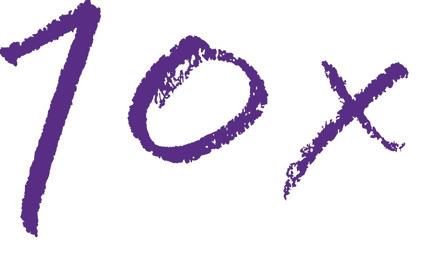
You touched upon the need to collaborate with ecosystem and tech players like Salesforce. How do you view the platform being an enabler of this ecosystem?
All financial services products are really just data. Sometimes there’s a human being on the end of a transaction, but at the end of the day, the products themselves are represented by data.
Therefore we need a very easy way of handling data, and that’s why the way we build the platform is so key because we can stream data to our clients as well as third parties in real time. We can ingest data in real time. Or, sometimes, we need to do that through a set of batch processes, which is also fine if it’s more efficient. The reason why that’s important is for the first time ever, data experts - data scientists, for example - can look inside the platform, view the transactions of clients and perform analysis in real time, to then send it back for actions and insights. This is very important because traditionally data scientists have had to pull data out of multiple different production systems, clean it up, put it in a data lake before anything useful could happen with it, which was a highly inefficient and expensive process.
You can now see in real time that customers are taking balances away from you for liquidity management purposes, or because they can get a better FX rate somewhere else, which will enable you to make an intervention quite quickly. So your relationship manager can call up the customer of the bank and say, ‘I see that you’ve moved two million pounds of balances away from us. Why is that? What can we do to keep that money inside the bank?’ For the first time, that capability is available through the platform.
That brings me to a very interesting point, which is relationship management. What is your view on what technology does better in terms of relationship management, which is absolutely a key driver in corporate banking?
One of my core insights that I’ve obtained over my long career in industry is from my time in branch banking. In branch banking back in the day, a branch was an integrated business. We served everybody from students who had just arrived in the country to go to university to companies that were based in the area. We served everybody. The learning I took away from that was that dealing with your finances is actually just a chore for most people - and that’s true from the individual all the way up to a corporate treasurer.

There’s nothing inherently valuable about financial services, it’s only what it enables. As I always like to say, nobody wants to get a mortgage, everybody wants to buy a house. Same for a corporate treasurer. Their job is to optimise the financial position of the company across different accounts, different legal entities, different geographies, different currencies. That’s their job.
Our job is to make their lives easier – and we have to recognise that. Nobody really cares about banking as an entity, but only about what it can enable them to do in their lives. Therefore, the ability to make real-time decisioning and execute transactions at high speed, and very low cost, is incredibly important, and that’s why this access to data becomes so important because you need that to be able to provide those sorts of services – but our job should be to make the treasurer’s job incredibly easy.
Now, technology comes into play because we can automate a lot of that. We can take a lot of the load out of that work for the treasurer and then present a set of choices to them. I think there’s always going to be a human dealing with that corporate treasurer, who can then be freed up to deal with the activities that really matter, helping with major challenges and decision making around these challenges, while also proactively supporting them with their changing strategies. The more we can automate, the better.
In this report, we talk about how we need to create an ‘outside in’ approach to core banking and other systems. How do you define this ‘outside in’ approach?
I founded this company because I knew there was a better way to serve my customers as a banker using technology. But frankly, I looked for it all over the world, and I couldn’t find it. So I decided to build it, starting with the question, ‘what does the customer of a bank need?’ How can we make their lives easier? How can we do banking 10 times better, faster and cheaper. And that was the outside perspective that we brought to the problem.
The inside perspective is that I’ve got a set of technologies which reflect the structure of my organisation and the products that we provide, and sitting amongst them is a core banking platform – and many times multiple core banking platforms. Our work is not to provide another new core banking platform, because that doesn’t solve any problems at all. Yes, it might run on the cloud, so you don’t have to run a data centre anymore. But so what? If you’re still running the same 20-year-old code in the same highly ineffective architecture that you’ve been operating for the last 20 years, you’re not going to get a 10x benefit from that. You might get a little bit of a benefit on the margin.
This platform has the key components of being architected around the customer, not around the product. Our platform works around the customer, so the customer can have infinite products with us. Also, because we use micro services, we can build new products very quickly. With this ‘outside in’ approach, we are able to provide transformational capabilities to the bank.
Other capabilities like ‘Bank Manager’ was built out of my own experience as a product manager many years ago when I was trying to launch new products in the banks that I worked for. It took me months, sometimes years, to do that. How can we do that instantaneously? Because of our no code product capability, a product manager can design a new product, populate it into a workflow, get it signed off and then take it into production, in the matter of a few hours.
A lot of banks seem to follow a whole transformation model where you replace systems one by one, change the core banking to a newer core banking, etc. As against an approach where you don’t immediately replace systems but add a digital platform on top, while removing redundancy over time. Which approach works better, in your opinion?
Let’s take the example of a car, an internal combustion engine car. We can say, ‘Okay, I’ve got this car. I’ve added bits to it over the years. Now I need to replace the carburettor, or I need to replace the engine block, and I’ll put a more efficient carburettor in there, and I’ll get a bit more performance out of the car.’ That’s one solution. In fact, what’s happened with banks deploying more services like mobile and Internet, the car’s become more complicated. We put a spoiler on the back, maybe we upgrade the exhaust system, but the thing has become much more complicated, and the solution is not - in our view - to just replace the carburettor.
Our solution is to have a radically different approach which is the equivalent of an electric vehicle. An electric vehicle has a 10th of the parts that an internal combustion engine vehicle has, which is basically a battery, a motor and a set of brakes. That’s the equivalent of 10x. It’s much simpler, goes much faster and is more environmentally friendly. That’s the 10x vision in the equivalent of these two things.
I don’t believe banks should be trying to solve the problem of upgrading the core. They should be fundamentally implementing the bank operating system of the future, using a platform approach. Platformification brings advantages like a customer centric architecture, services built in (no products) and multi-tenant connectivity.

You only have to connect the bank operating system to other bank systems, like payments, ledgers and customer master files once. Each use case can then be brought up as a different tenant on the platform, which is exactly what we’re doing with Westpac in Australia where we started off with the bank as a service offering that was a set of tenants over here, and now we’re bringing up cash management, which is another set of tenants over there.
To conclude, what do you think is the future of technology in corporate banking?
I think we always talk a lot in these types of interviews about technology -technology, technology, technology. We’re all interested in technology. We are a technology company. But at the end of the day, the most important thing is people.
All of our customers in banks are people, and all of the people they serve are people. The key to any change journey is really about harnessing technology to serve people. We should be using technology to empower our people to serve 10 times better.
Thank you!
This interview was transcribed from a phone conversation.

What became increasingly transparent in our research is that digital transformation, by itself, is not sufficient to drive revenue opportunities or cost efficiencies for corporate banks. The rate of corporate banking innovation that is underway is absolutely delightful to observe - however, the raison d’etre of this innovation needs to be connected to the larger picture of ecosystem strategy in banks.
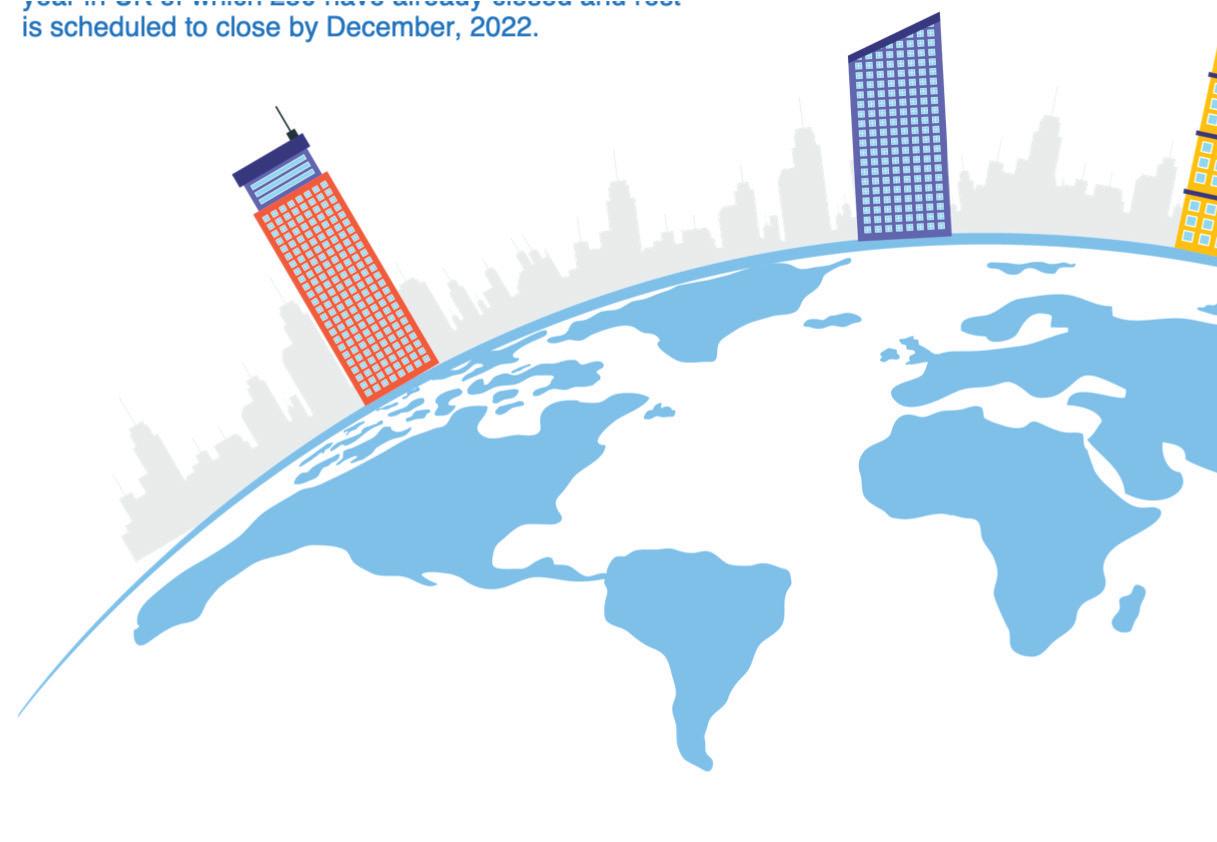
They need to focus on having all the building blocks in place, so that they can be an efficient orchestrator or enabler of the customer’s ecosystem. Secondly, corporate banks need to shift the focus back to their own core competencies, and build in connectivity, as one of the interviewees has mentioned, in order to get the best resources and insights of the wider ecosystem into the bank.
Corporate banks need to have the capability to identify, connect with and culturally align with partners in the fintech and technology ecosystems so that they can outsource innovation to a great extent, while focusing on the internal strengths and core strategies.
Such an orchestration or enablement is highly beneficial to the wider ecosystem, with several parties within the fintech ecosystem potentially benefiting on new revenue and scale opportunities through such collaboration. While automation from manual to digital processes is a great first step, I hope the focus for corporate banks over the next five years will be in innovating efficiently with a strong desire to bring the outside world in.
- Devie MohanThis report has been published by Burnmark in partnership with 10X





10X Baking is a financial services technology company with a mission to move banks from monolithic to next-generation core banking solutions delivered through the world’s most comprehensive and powerful cloud native SaaS bank operating system.




For any questions or comments, please write to info@burnmark.com September 2022 | @burnmark_ @10xbanking
